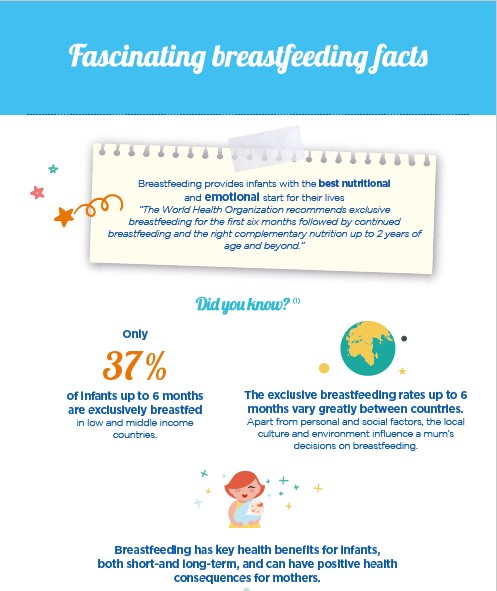The unique proteins, minerals, vitamins and hormones in human milk have multiple benefits for newborn babies. Naturally tailored to the nutritional needs of infants, breastfeeding gives them the best possible start in life.
Human milk is made up of around 88% water plus a ‘solid’ component, which includes proteins, lipids, lactose, prebiotic oligosaccharides and beneficial bacteria, including bifidobacterial, lactobacilli and their metabolites. It also contains vitamins, minerals, nucleotides and hormones plus living cells, such as immune and stem cells1.
Breast milk is like a symphony orchestra, with each of the components acting like one of its instruments.
These components interact with each other in a unique way to provide multiple health benefits to the baby, as well as optimal nutrition in the first 1,000 days. It is not just one or even a few ingredients in human milk that provide special benefits to infants, but rather it’s the interplay between multiple ingredients that delivers these benefits1. To put things into perspective, imagine human milk is like a symphony orchestra, with each of the components acting like one of its instruments. In the orchestra, it is the interaction between the various instruments that produces the harmonious melody, not just the individual instruments. Similarly, it is the interplay between all of the components in breast milk that results in the miracle that is breastfeeding.

Infography: Fascinating breastfeeding facts
References
- Newburg DS and Neubauer SH: In: RG Jensen (ed): Human milk composition Academic Press 1995; 273-349
BA19-485
